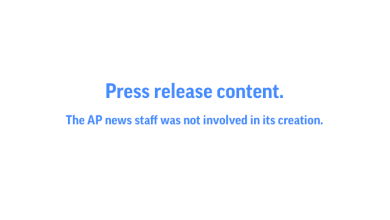WTO cuts global trade forecast; US inflation hits 40-year high of 8.5% – BUSINESS LIVE

Good morning, and welcome to our rolling coverage of business, the world economy and financial markets.
Britain’s unemployment rate has fallen below its pre-pandemic levels as employers struggle to keep staff, and more people drop out of the labor force.
And Britain’s wage squeeze continued, with regular wages down 1% from the previous year after adjusting for inflation.
UK unemployment rate slips 3.8% Three months to February, shows the latest labor force survey released this morning. This is the lowest rate since October-December 2019, just before Covid-19 hit the economy, with unemployment totaling 86,000 to 1.296m.
Employment increased by 10,000 during the quarter, with 32,485 people now employed. This left the UK employment rate flat 75.5%Still down 1.1 percentage points from before the coronavirus pandemic.
Instead, the economic inaction rate increased by 0.2 percentage points. 21.4% From December 2021 to February 2022. This is because 76,000 more people became financially inactive in the quarter, bringing the total to 8.857 million.
This increase was driven by those who are financially inactive because they are looking after a family or home, are retired, or are chronically ill, the ONS states.
Headline indicators for the UK labor market from December 2021 to February 2022 show that
️ Employment was 75.5%
Unemployment was 3.8%
️ Economic inactivity was 21.4%
— Office of National Statistics (ONS) (@ONS)
Companies added more employees, with 35,000 more people in payroll employment in March than in February.
But while the number of full-time employees increased during the latest three-month period, it was offset by a decrease in part-time employees, as this chart shows:
© Provided by The Guardian UK Employment
Job vacancies hit a new record in the quarter, rising to 1,288,000.
But the rate of increase in vacancies continued to slow down. 50,200 new openings were added in January to March 2022 compared to the previous quarter, the slowest increase in nearly a year.
The biggest increase was in human health and social work, which saw an increase of 13,100 to a new record of 215,500 vacancies.
There were an average of 1.288 million job vacancies from January to March 2022, up from 1.238 million in the previous quarter pic.twitter.com/SKl4rGLKM2
— Office of National Statistics (ONS) (@ONS)
More details to follow….
still coming today
US inflation could hit a 40-year high today, with March Consumer Price Index data projected to rise to 8.4% from February’s 7.9%.
This will be the fastest pace since 1981, and will likely prompt the Federal Reserve to aggressively raise US interest rates in the coming months. Economists now expect a half-digit increase in both May and June.
We also get the latest Economic Confidence Index for Germany from the ZEW Institute, which will show the impact of the Ukraine War on investors.
European stock markets are set to open lower tomorrow, down nearly 0.6%.
European Opening Call: 7561 -0.75% 13996 -1.39% 6478 -1.18% 707 -1.15% 24520 -0.93% 8495 -1.05% 2068 -1.43% 12427 -0.81% 3791 -1.27%
— IGSquawk (@IGSquawk)
work schedule
- 7 a.m. BST: UK labor market report
- 10am BST: ZEW survey of German economic confidence in April
- 11am BST: NFIB Index of US Business Optimism Index
- 1.30 a.m. BST: US inflation report for March




